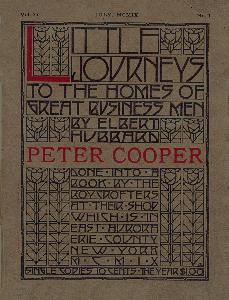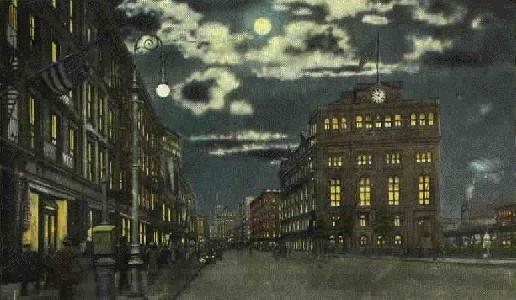Peter Cooper and the Cooper Union
 |
|
|
Peter Cooper (1791-1883)
Cooper Union, a prestigious institution of higher learning was established in 1859 by Peter Cooper who was a self-made man with little formal schooling. He managed to become an industrialist and made his fortune with a glue factory and an iron foundry. He later ventured into real estate, insurance, railroads and built America's first steam railroad engine. It was the firm of which he was first president, The New York, Newfoundland & London Telegraph Co which undertook the huge enterprise of laying the first Atlantic cable.
While a young boy, he had vainly tried to get some education, as well as scientific and technical knowledge to supplement his natural skills. He never forgot his hard beginnings in life and when he became rich, he was inspired by the example of the Ecole Polytechnique in Paris and sought a way to offer the working class and the children of immigrants a free education, setting up the Cooper Union. At first, he provided night classes for men and women in the applied sciences and architectural drawing. He also offered free art classes as well as training in the new professions of photography, telegraphy, "type-writing" and shorthand.
From the beginning, Cooper Union also provided a public reading room and library and a meeting place for artists and inventors. Abraham Lincoln gave his "Right Makes Might" speech from the Great Hall podium, assuring him the Presidency. The reproduction at the left shows the cover of the 1909 book about Peter Cooper in the "Little Journeys to the homes of great business men" series, by Elbert Hubbard. The text, which is fascinating reading, is available here.
Peter Cooper wanted to give talented people the one privilege he had lacked — a good education. That illustrious place will thus see John Cowper Powys launching early in 1905 into his passionate and unique lectures in order "to make the proletarian sages of Cooper Union 'sit up'".
The Cooper Union continues to operate to the present day.

My first American lecture was, I think, addressed to the Ladies' Club of Madison, New Jersey, my second, I know, was delivered before that great, unique, proletarian audience, by far the most exciting audience in America, which comes together on so many nights in the week in the huge Rotunda of Cooper Union. On this Cooper Union platform, the site of my second lecture in this country, I think I indicated pretty clearly that I was no mere Pierrot of Culture, but had in me "something dangerous." My subject was "The Republic of the Future" and I well remember that I predicted the coming into being of a state of things not unlike what has happened in Russia. (Autobiography p.462)
|
|